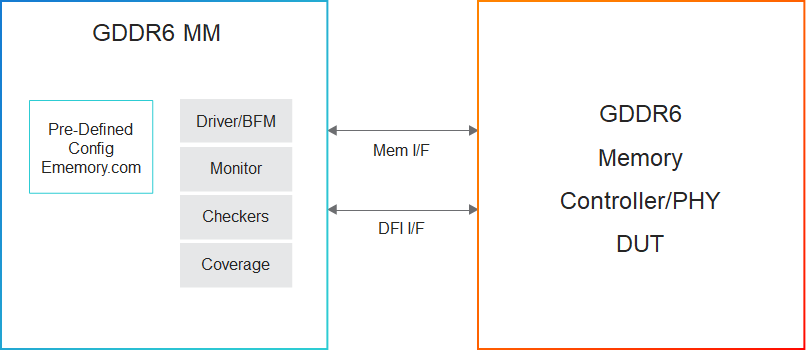Overview
Gold standard for JEDEC® GDDR6 memory device for your IP, SoC, and system-level design verification.
Sign-off model for dozens of production designs.
This Cadence® Verification IP (VIP) provides support for the JEDEC® Graphics Double Data Rate (GDDR6) SGRAM GDDR6 standard. It provides a mature, highly capable compliance verification solution that supports simulation, formal analysis, and hardware acceleration platforms, making it applicable to intellectual property (IP), system-on-chip (SoC), and system-level verification. The VIP for GDDR6 is compatible with the industry-standard Universal Verification Methodology (UVM), runs on all leading simulators, and leverages the industry-standard Cadence Memory Model core architecture, interface, and use model.

Product Highlights
Key Features
The following table describes key features from the specifications that are implemented in the VIP:
Feature Name |
Description |
|---|---|
Speed |
|
Device Density |
|
Device Configuration |
|
Bank Architecture |
|
Simulation Test Suite
MM has a rich test suite of scenarios for easy MM evaluation and deployment.
Please contact us for further information.
Master Your Tools
Tutorials, Documentation, and Local Experts
Cadence Online Support
Increase your efficiency in using Cadence Verification IP with online trainings, VIP Portal, application notes, and troubleshooting articles